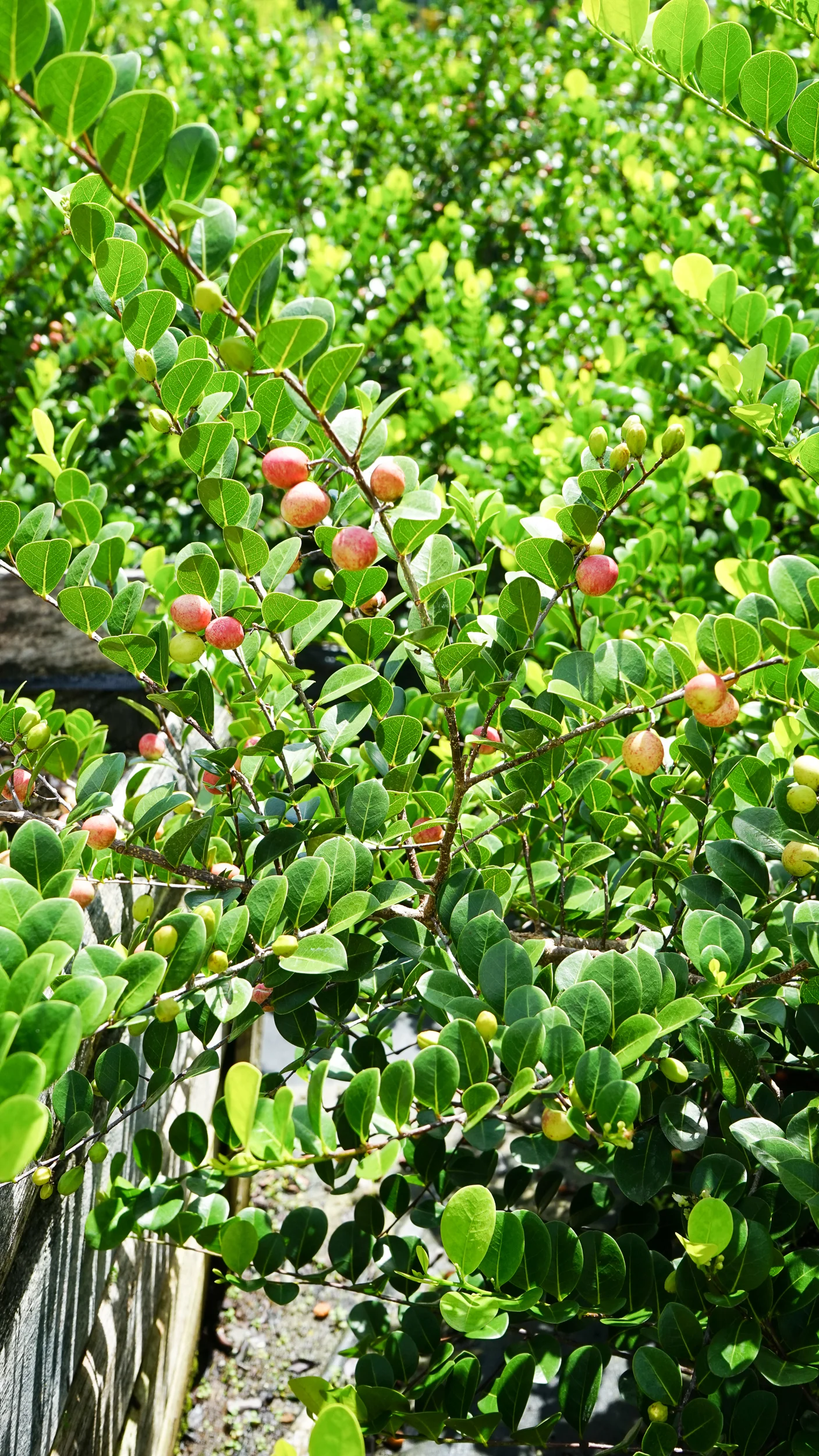Cocoplum (Chrysobalanus icaco)
Common Name Cocoplum
Latin Name Chrysobalanus icaco
Family Chrysobalanaceae
Native Yes
Zone 10-11
Height 10-30 Feet; Horizontal variety 5-6 feet
Spread 10-20 Feet
Salt Water Tolerance Horizontal variety- high
Red Tip variety- low
Salt Wind Tolerance Moderate
Drought Tolerance High
Soil Tolerates most soil conditions
Sun Full Sun
Wildlife Attractant Pollinators, birds, ground-dwelling wildlife
Main Uses
The Cocoplum, native to Florida, is considered a shrub or small tree. It grows densely, making it a great hedge. The “horizontal” form of cocoplum is best used as a ground cover in coastal gardens, as it spreads out in its growth, and is considered very salt tolerant, whereas with the “Red Tip” cocoplum, it is less salt tolerant, grows bigger, and is best suited for a tropical hammock garden.
When wanting to create a native habitat for wildlife, the cocoplum is a great choice in that it provides excellent cover and food for indigenous species.
Appearance
The most notable feature of the cocoplum is its round purplish white fruit growing on its branches. Its fruit is edible and has been used to make jellies. The Horizontal cocoplum has low spreading branches, covered in rounded shiny green leaves. The Red Tip cocoplum branches grow full and dense with the same leaf as the Horizontal type.
The Red Tip cocoplum can grow upwards of 20-30 feet high, thriving best in full sun.
Wildlife Attractant
Two components of creating an inviting habitat for native wildlife include food and cover. The cocoplum offers both components, with its sweet fruit and its dense foliage. Its tiny white flowers attract many pollinators, and its sweet fruit offers food nearly year-round. Creating a garden with lots of natural cover offers safety and refuge to the wildlife these native plants are attracting, making the addition of the cocoplum a must.






